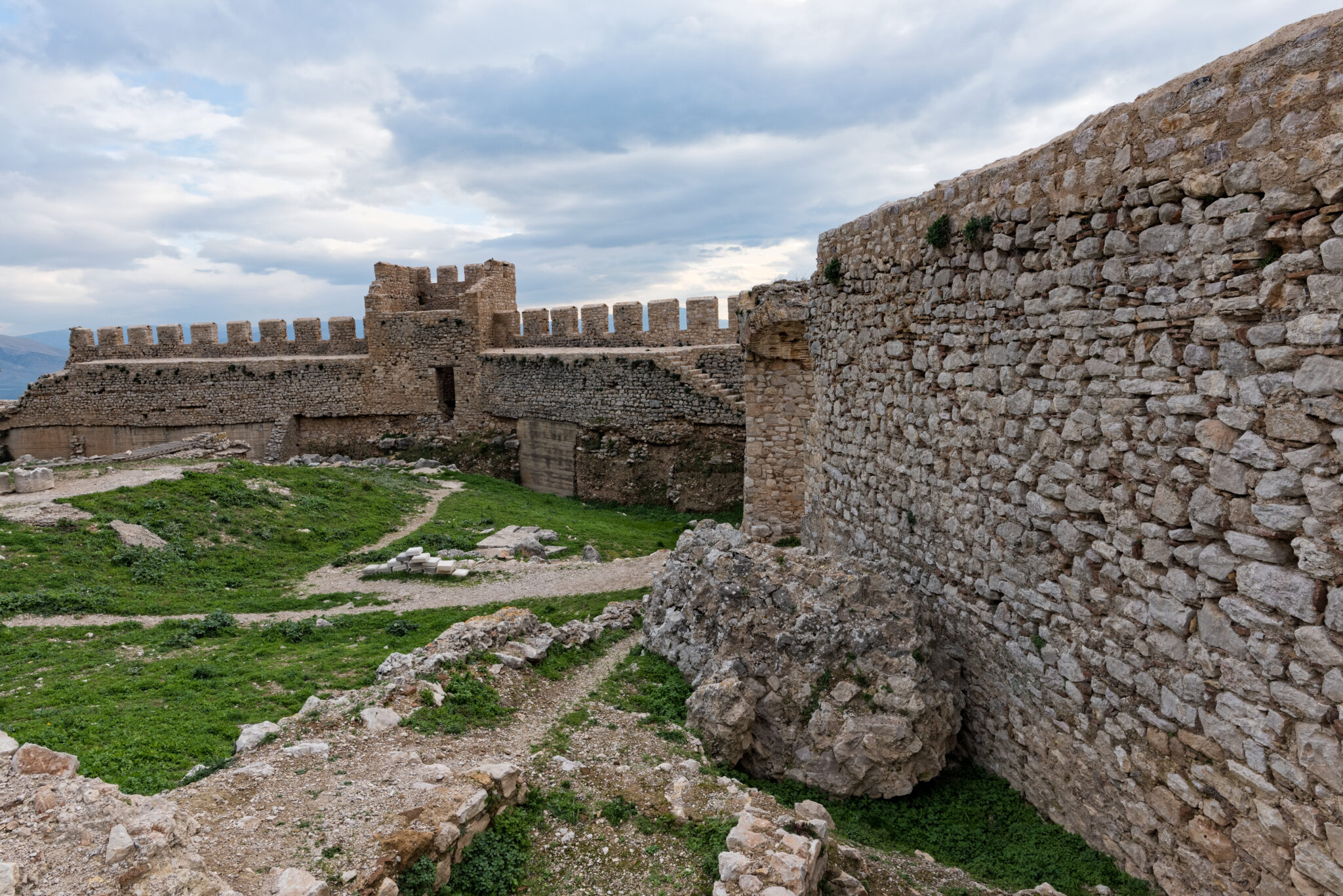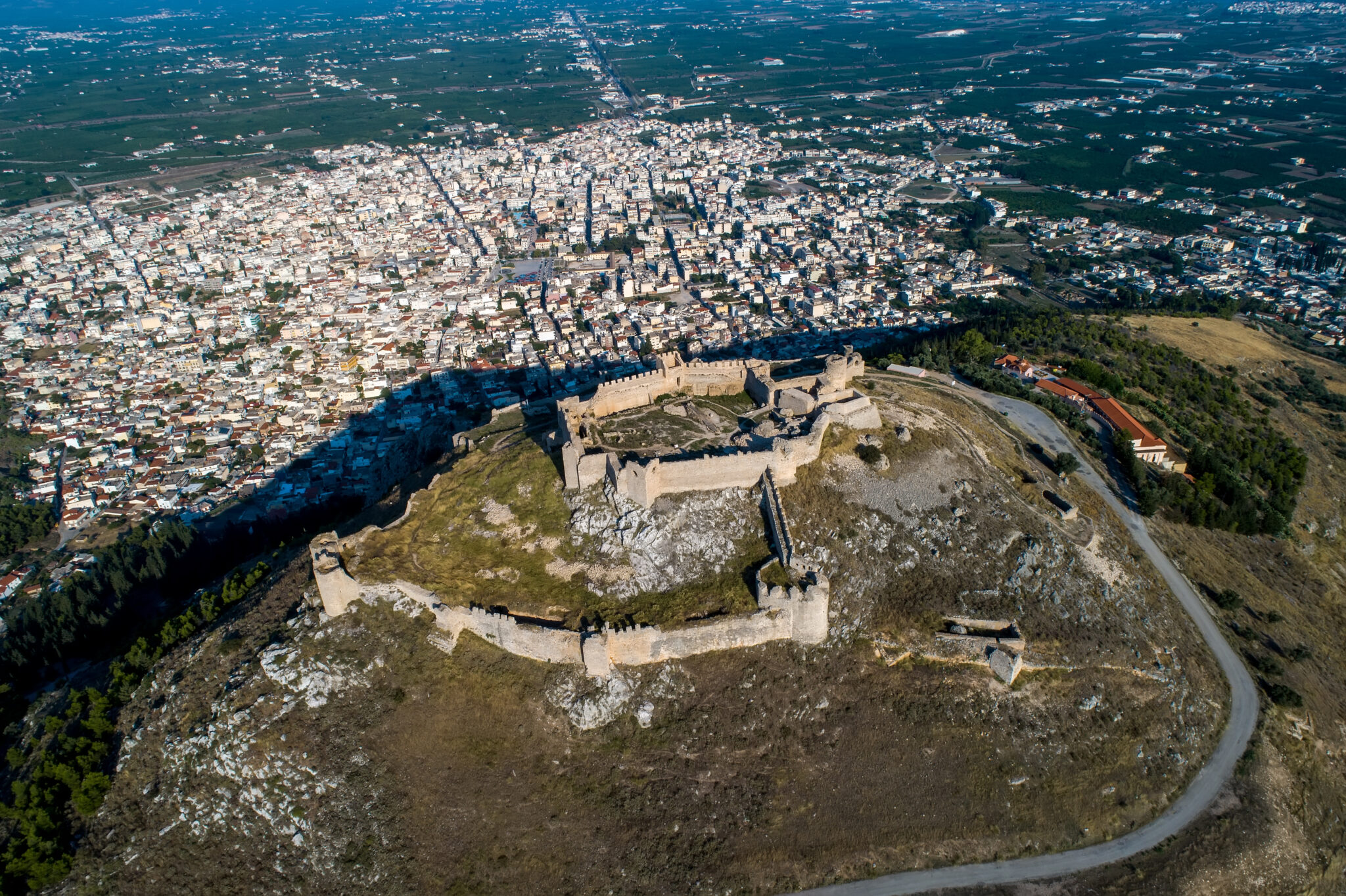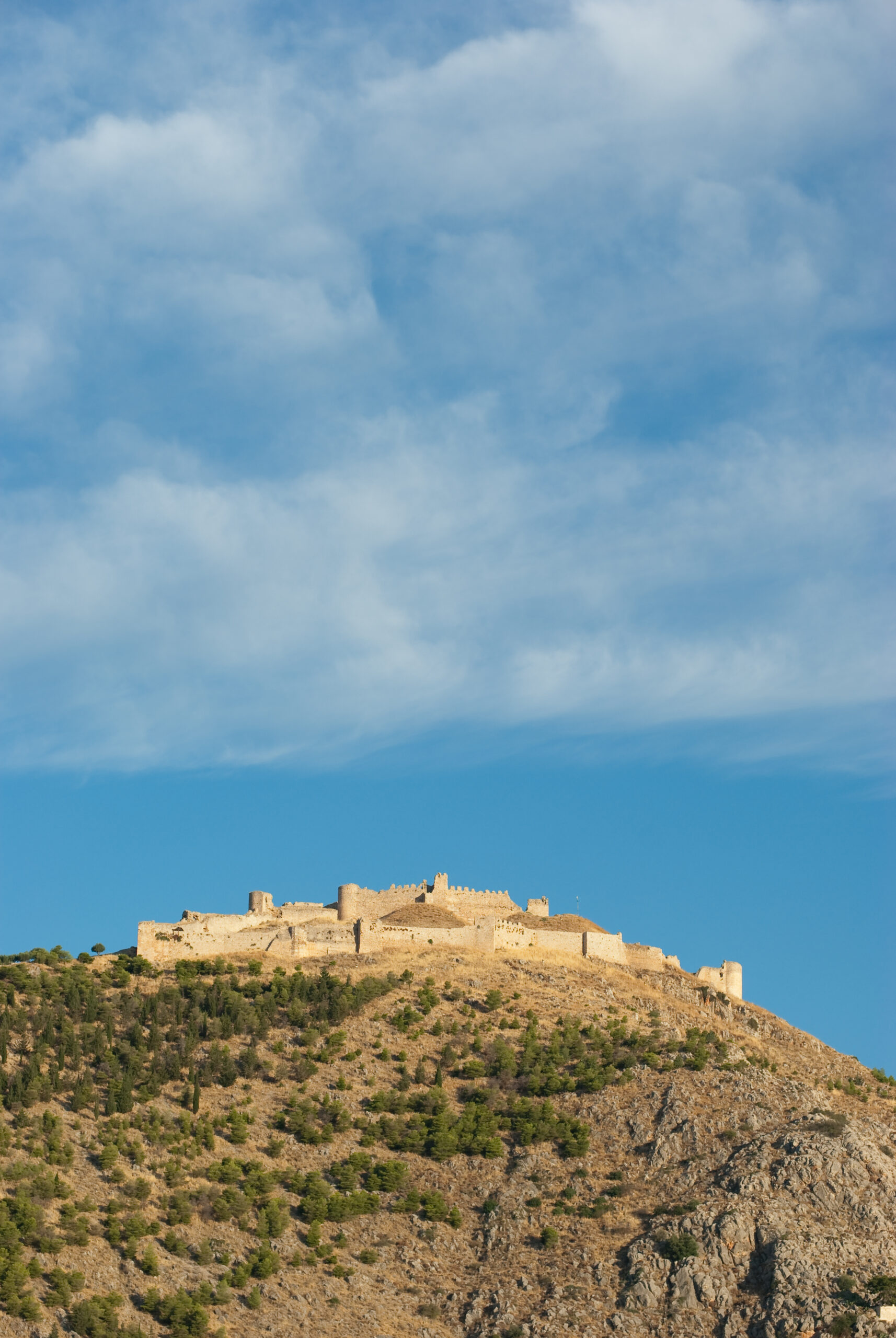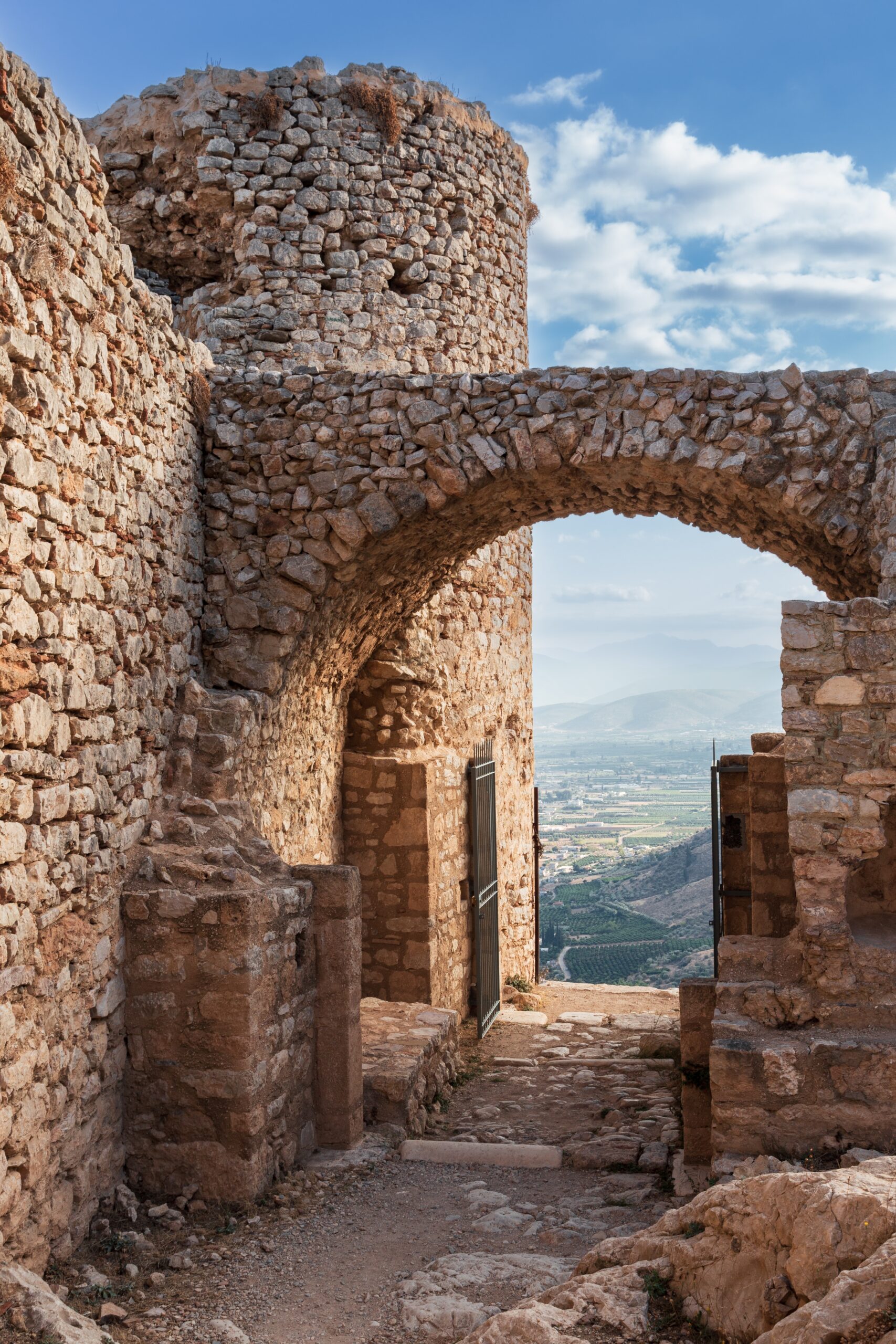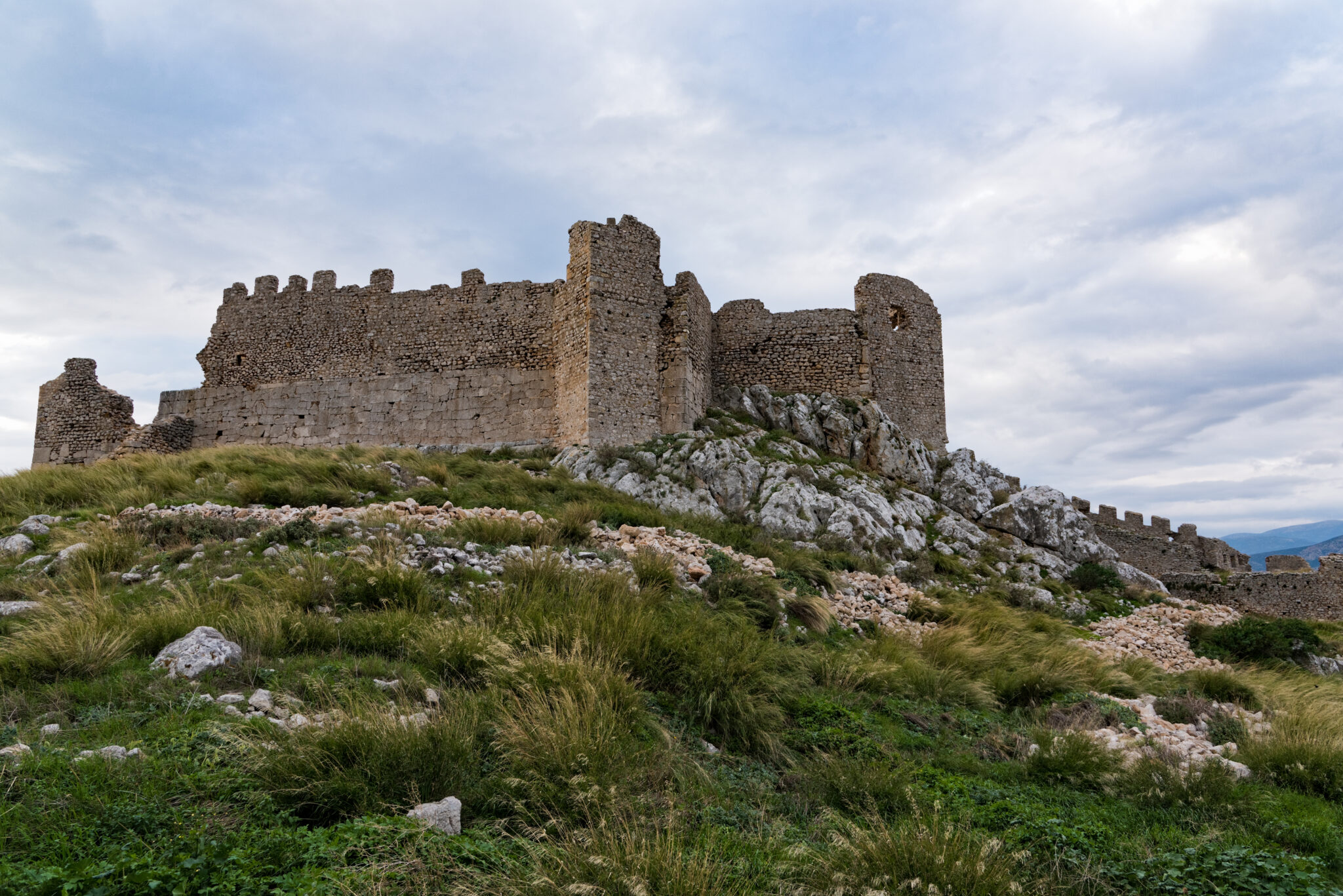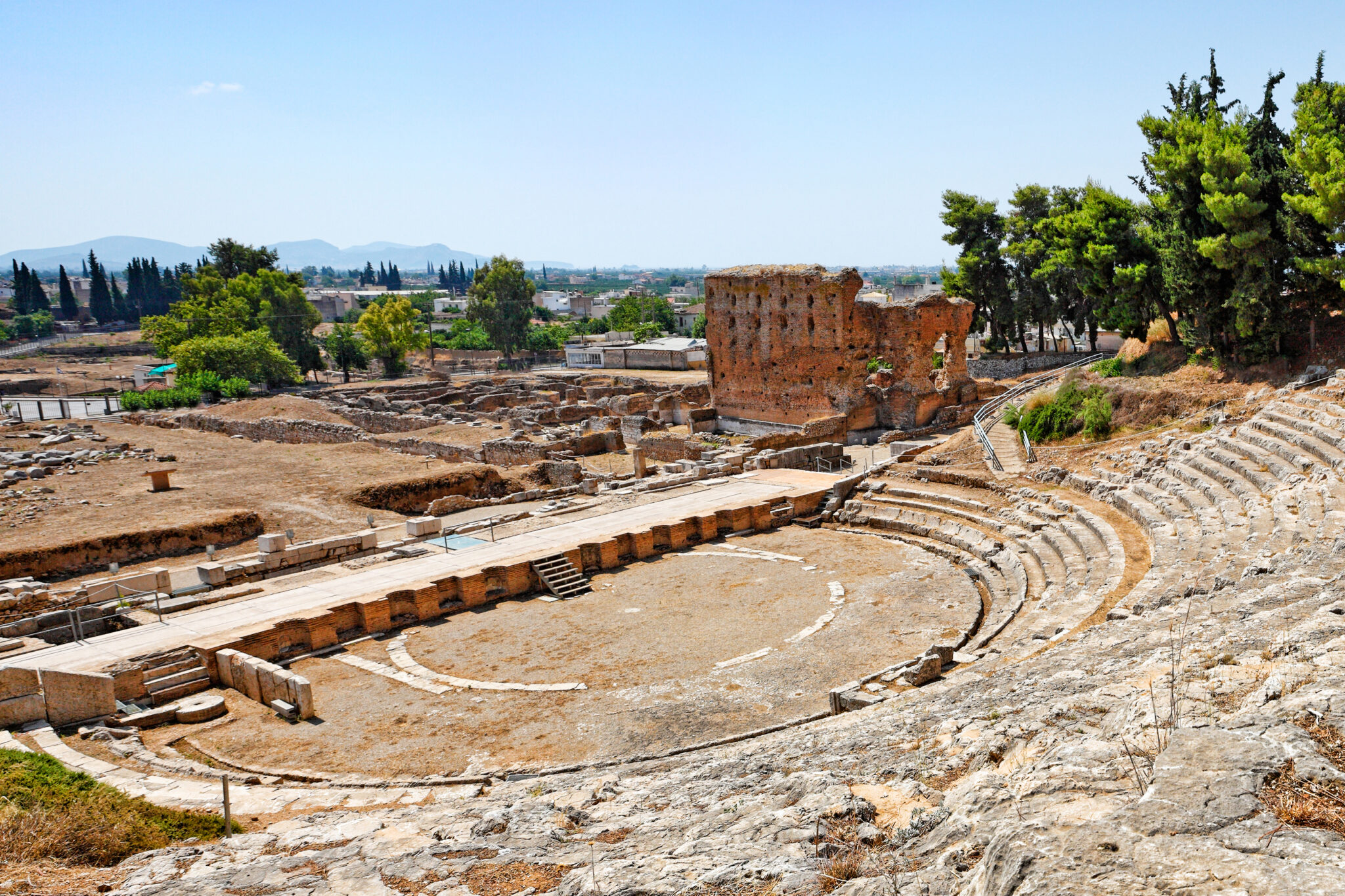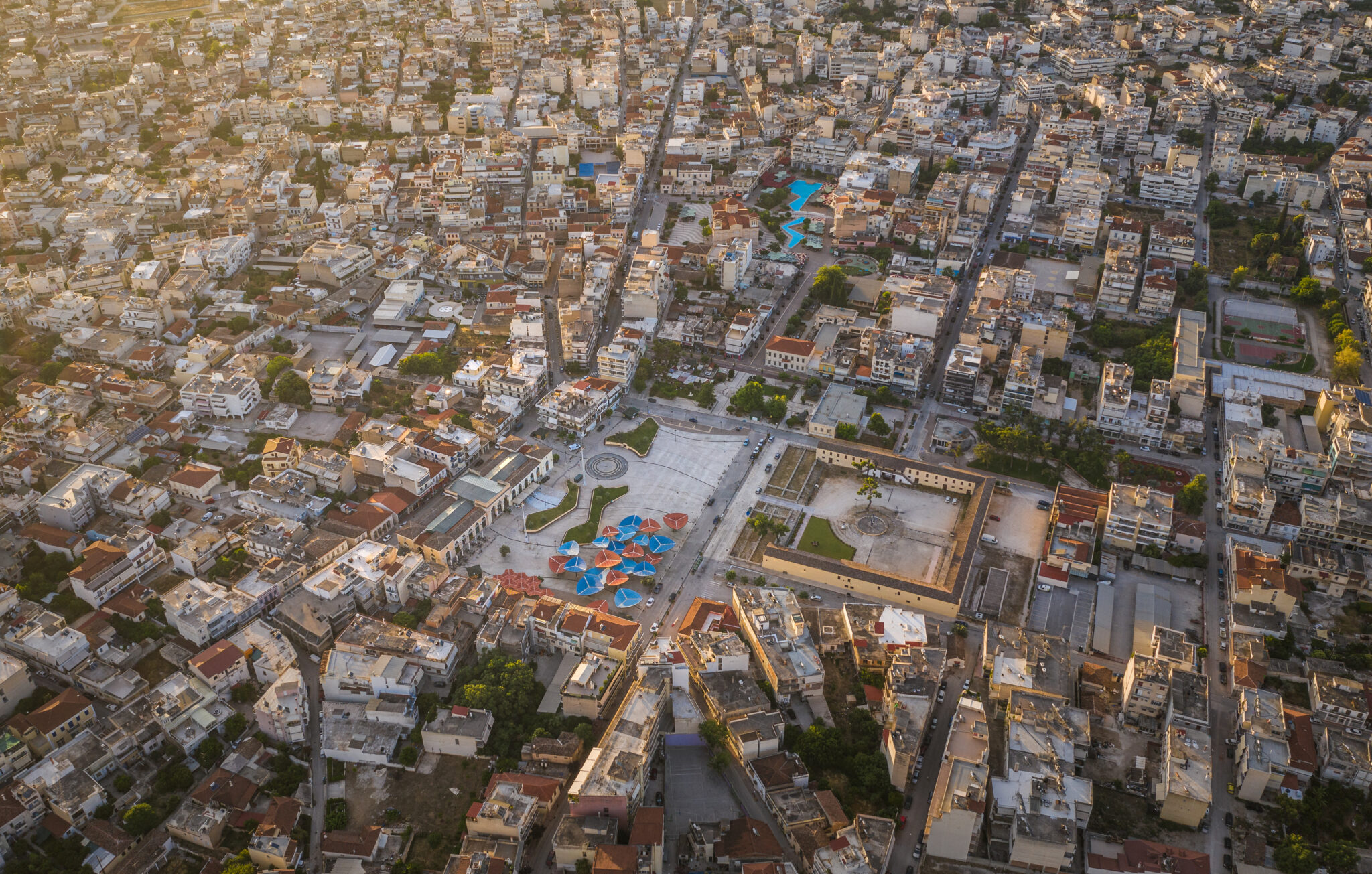Argos ranks as one of Europe’s most venerable, continuously inhabited cities. A shining symbol of this ageless city in Argolida is its fortress. The Larissa Castle has been a commanding presence since the mists of prehistory, marking it as a defining feature of Argos. Indeed, you can enjoy beautiful views from virtually every spot in the city.
The name of the fortress, Larissa, itself whispers of ancient times, tracing back to a Pelasgian term for ‘fortified acropolis.’ The colossal stones that form part of its structure recall those used in the Cyclopean walls of Mycenae and Tiryns. In the 5th and 6th centuries BC, the citizens of Argos repaired and expanded these walls, laying new foundations atop the old. Portions of these enhancements still stand today, particularly on the north and west sides.
The medieval castle stood as a Byzantine bastion of utmost importance in the Peloponnese. Its present appearance, however, largely dates to the Frankish period with significant renovations in the mid-13th century. The fortress switched hands between the Venetians and the Ottomans until it became part of the modern Greek nation. In this saga, Larissa Castle had a pivotal role during the Greek War of Independence.
Dramalis Before the Walls
In June 1822, a year into the Greek Revolution, a formidable Ottoman force led by Mahmud Pasha Dramalis descended upon the Peloponnese. The then-newly appointed Greek commander, Theodoros Kolokotronis, assessed the necessity of capturing the fortress to distract the enemy and gain invaluable time. Kolokotronis initially dispatched 100 select fighters, later bolstered by additional forces to reach a total of 700 under Dimitrios Ypsilantis.
The revolutionaries retained control of the fortress until July 24, 1822, managing a strategic withdrawal after a feint to the Myloi camp. Dramalis’s forces were held up at the Larissa Acropolis for approximately 15 days. This delay afforded the Greeks the opportunity to muster men and marshal their resources, leading to the decisive victory at Dervenakia on July 26, 1822.
Temples Through Time
A tribute to Larissa Castle’s perennial significance is the variety of religious edifices it hosted: from ancient Greek worship with temples dedicated to Larisaean Zeus and Athena Polias, to a 12th-century Byzantine church. The foundation inscription of this church, bearing Bishop Nikitas’s name, has been preserved and is now kept in the storage facilities of the Archaeological Museum of Argos.
The grand walls and towering spires of the castle, combined with its hilltop position, create an imposing image, suggesting the fortress is in prime condition. Unfortunately, this isn’t the case, though in recent years, efforts have been made to improve its appearance and structure. Nonetheless, it’s well worth a visit, if only for the breathtaking views it offers of the Argolic plain and its charming villages.
Tips for Your Trip
-Argos is 127 kilometres from Athens, 12 kilometres from Nafplio, and 12 kilometres from Mycenae.
-Just 8 km from Argos, you’ll find Ancient Tiryns, the best-preserved Mycenaean acropolis with significant archaeological findings.
-Another key landmark in Argos is the ancient theatre, dating back to the Hellenistic period.
-The most impressive spot in Argos is Saint Peter’s Square, in front of the city’s cathedral. The church was built in the mid-19th century, and the square has undergone extensive renovations centred on water and greenery.
-Another notable building is the Old Town Hall. A neoclassical two-storey building from the 19th century, established under Kapodistrias.
-The Kapodistrias Barracks, now home to the municipal theatre and the Byzantine Museum of the city, are also worth visiting. The first governor of Greece transformed the old Ottoman bazaar into a building complex for the cavalry barracks.
-Finally, we recommend two excellent dining options: Kotros (2752 044054) serves delicious traditional recipes like “gogges” (boiled and served with burnt butter and grated mizithra cheese), as well as a variety of meats. The famous Spilia (27510 62300), on the road between Argos and Myloi, has been around for over 50 years, known for recipes like grilled chicken with a secret sauce.
Read also:



